Slide #5
 Installation view of "112 Greene Street: The Early Years (1970–1974)," curated by Jessamyn Fiore at David Zwirner, New York. Courtesy David Zwirner, New York.
What about the years after 1974?
I chose 1974 as the end date because that was when the last show involving the core group of artists from the early years took place. Anarchitecture took place in March that year. Anarchitecture was a group that met on a semi-regular basis to discuss ideas about art, architecture, space, time, and language, which were philosophical meeting points, you could say, between all of their practices. That culminated in this exhibition at 112 Greene Street. It is a strange exhibition because they agreed that the work they would show would be black and white photographs that they either found or took themselves, that demonstrated what they considered to be "anarchitecture." While the exhibition took place at the venue, I could not find one photo of it. I looked through many artists’ archives and talked to many who otherwise have kept meticulous records of those years, but no one documented it.... it’s a strange one. But it was also kind of a goodbye. A lot of these artists, at that point, began to move on and while some continued to show at 112, this very close-knit community became scattered. And as mentioned, Jeffrey Lew started to become less and less involved after 1974-75.
The timeline at the end of the book spans from October 1970 to March 1974. I took my departure point in Brentano’s extensive timeline in her book, which I mentioned above, and also added my own research and made some corrections where applicable. It offers a good overview of how busy this space was and who was involved in it. So many artists passed through those doors, from unfamiliar names to some of the biggest names in the art world. The timeline alone reflects the variety of the work produced at place—it immediately reflects its vitality.
It's a really cool book
Thank you. I'm excited about it. Like I said, it's such a rich subject, and this publication still only scratches the surface, but I hope there is enough in there to inspire others to keep digging and keep looking. And thanks to the fact that David Zwirner allowed me to make my own selection of which artists I wanted to include in the show, I was able to highlight artists who have been, by and large, forgotten by the art world today. Suzanne Harris is a prime example. 112 Greene Street was a great venue for female artists at the time—that is a story in itself–and I really wanted to take this opportunity to go back and bring to light such fantastic artists that for one reason or another have not received much attention. Back then, during those years, everyone was equal to a certain extent—artists at the venue made work and performed together and not only would they support each other, but they were also each other's greatest critics. They really fed off of each other creatively. It was important to me to highlight those individuals who have been overlooked in the broader conversations that have happened since those years. There's a lot more to be done along those lines. But hopefully, this will serve as a good introduction.
So, what's next for you?
First of all, I'll be promoting this book, of course. I really am passionate about bringing this information out to a younger generation. So I'll be promoting it by doing a series of talks at various universities and institutions around the country, as well as internationally, which we are in the process of organizing. I plan on spending a full year promoting this, but I'm also still actively involved with some of the artists I worked with in Ireland. I still have individual projects with them both in Ireland and in New York. I recently curated a small show at the Five Miles Gallery in Brooklyn. I still love working with emerging artists. I'm very interested in independent venues and looking at different independent art organizations that, I feel, connect the 112 Greene Street history with the present. Then, the next big project I would like to take on would be about Suzanne Harris. Like I said, I think she’s been overlooked, but her work is phenomenal–it's this amazing intersection between performance and sculpture. Unfortunately, she died very young, in 1979, just a year after Gordon. Her archives are currently with Jene Highstein and I had the privilege of being able to look through them. They really blew me away and I would love to do a book or an exhibition about her work and bring that legacy back. That would be my wish.
Installation view of "112 Greene Street: The Early Years (1970–1974)," curated by Jessamyn Fiore at David Zwirner, New York. Courtesy David Zwirner, New York.
What about the years after 1974?
I chose 1974 as the end date because that was when the last show involving the core group of artists from the early years took place. Anarchitecture took place in March that year. Anarchitecture was a group that met on a semi-regular basis to discuss ideas about art, architecture, space, time, and language, which were philosophical meeting points, you could say, between all of their practices. That culminated in this exhibition at 112 Greene Street. It is a strange exhibition because they agreed that the work they would show would be black and white photographs that they either found or took themselves, that demonstrated what they considered to be "anarchitecture." While the exhibition took place at the venue, I could not find one photo of it. I looked through many artists’ archives and talked to many who otherwise have kept meticulous records of those years, but no one documented it.... it’s a strange one. But it was also kind of a goodbye. A lot of these artists, at that point, began to move on and while some continued to show at 112, this very close-knit community became scattered. And as mentioned, Jeffrey Lew started to become less and less involved after 1974-75.
The timeline at the end of the book spans from October 1970 to March 1974. I took my departure point in Brentano’s extensive timeline in her book, which I mentioned above, and also added my own research and made some corrections where applicable. It offers a good overview of how busy this space was and who was involved in it. So many artists passed through those doors, from unfamiliar names to some of the biggest names in the art world. The timeline alone reflects the variety of the work produced at place—it immediately reflects its vitality.
It's a really cool book
Thank you. I'm excited about it. Like I said, it's such a rich subject, and this publication still only scratches the surface, but I hope there is enough in there to inspire others to keep digging and keep looking. And thanks to the fact that David Zwirner allowed me to make my own selection of which artists I wanted to include in the show, I was able to highlight artists who have been, by and large, forgotten by the art world today. Suzanne Harris is a prime example. 112 Greene Street was a great venue for female artists at the time—that is a story in itself–and I really wanted to take this opportunity to go back and bring to light such fantastic artists that for one reason or another have not received much attention. Back then, during those years, everyone was equal to a certain extent—artists at the venue made work and performed together and not only would they support each other, but they were also each other's greatest critics. They really fed off of each other creatively. It was important to me to highlight those individuals who have been overlooked in the broader conversations that have happened since those years. There's a lot more to be done along those lines. But hopefully, this will serve as a good introduction.
So, what's next for you?
First of all, I'll be promoting this book, of course. I really am passionate about bringing this information out to a younger generation. So I'll be promoting it by doing a series of talks at various universities and institutions around the country, as well as internationally, which we are in the process of organizing. I plan on spending a full year promoting this, but I'm also still actively involved with some of the artists I worked with in Ireland. I still have individual projects with them both in Ireland and in New York. I recently curated a small show at the Five Miles Gallery in Brooklyn. I still love working with emerging artists. I'm very interested in independent venues and looking at different independent art organizations that, I feel, connect the 112 Greene Street history with the present. Then, the next big project I would like to take on would be about Suzanne Harris. Like I said, I think she’s been overlooked, but her work is phenomenal–it's this amazing intersection between performance and sculpture. Unfortunately, she died very young, in 1979, just a year after Gordon. Her archives are currently with Jene Highstein and I had the privilege of being able to look through them. They really blew me away and I would love to do a book or an exhibition about her work and bring that legacy back. That would be my wish.
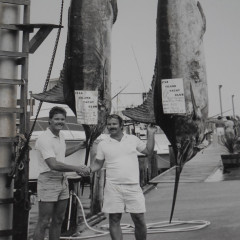
.jpg)
.jpg)
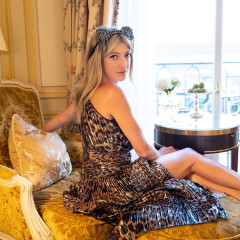
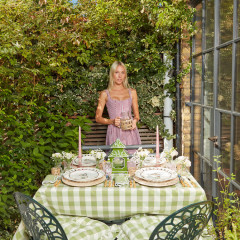
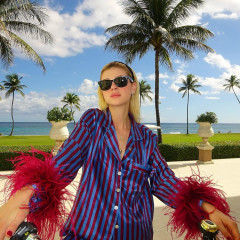
.jpg)
.jpg)
.jpg)
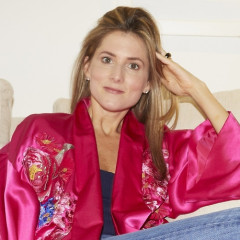
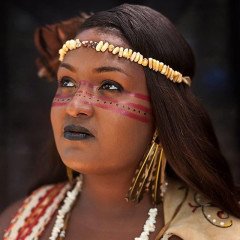

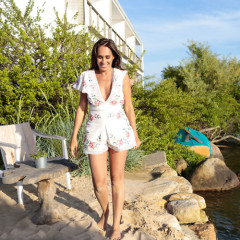
.jpg)